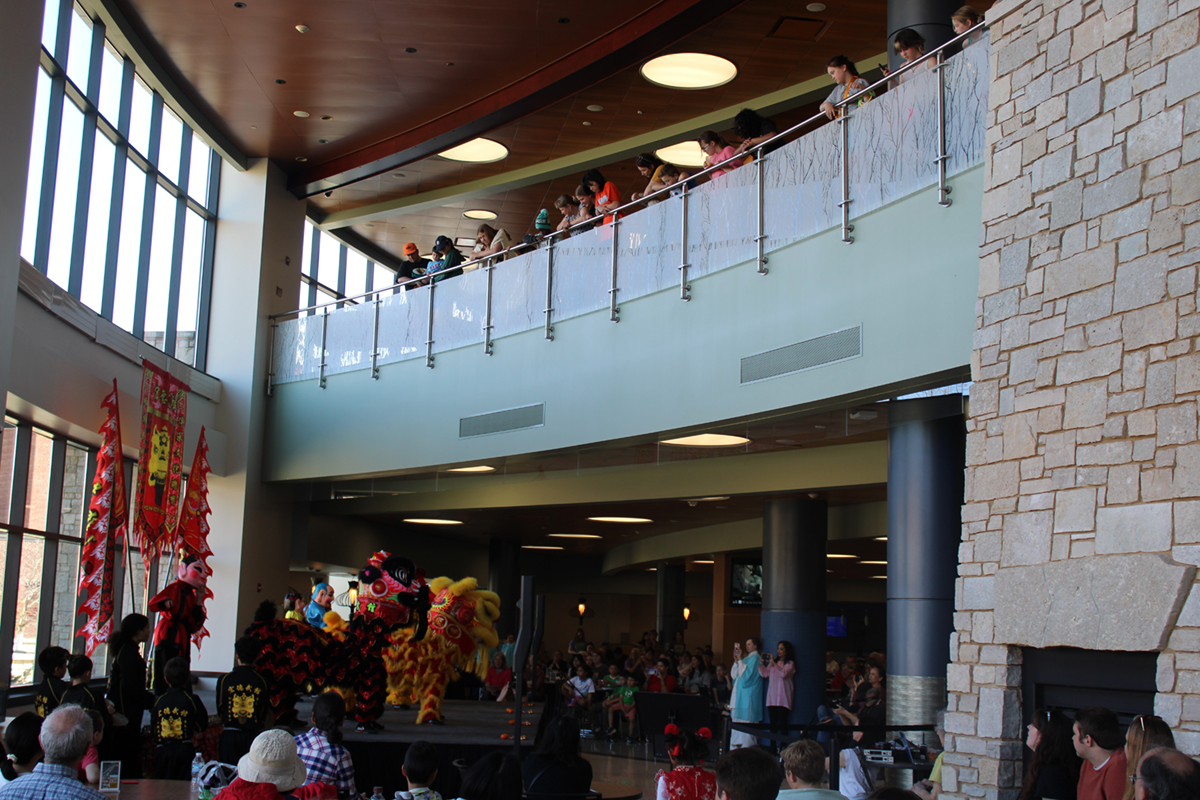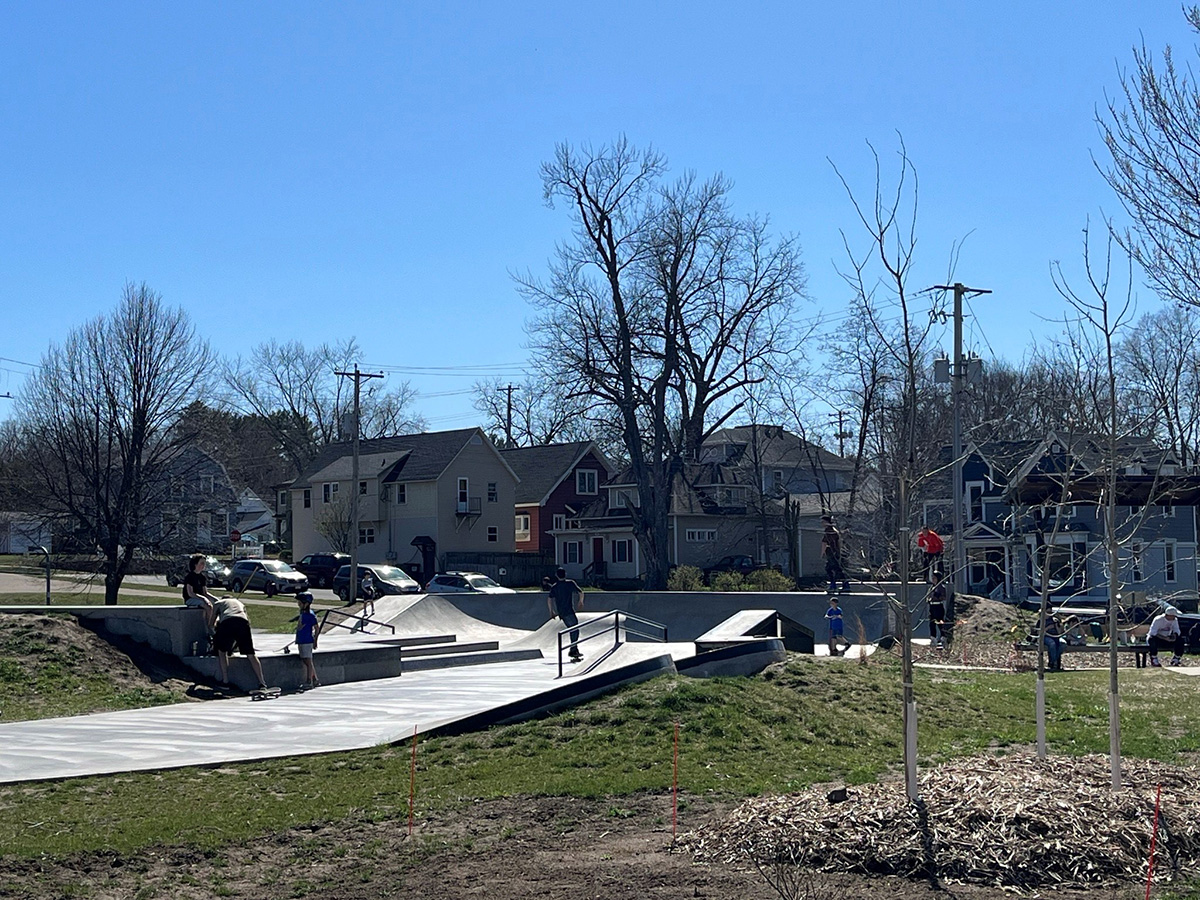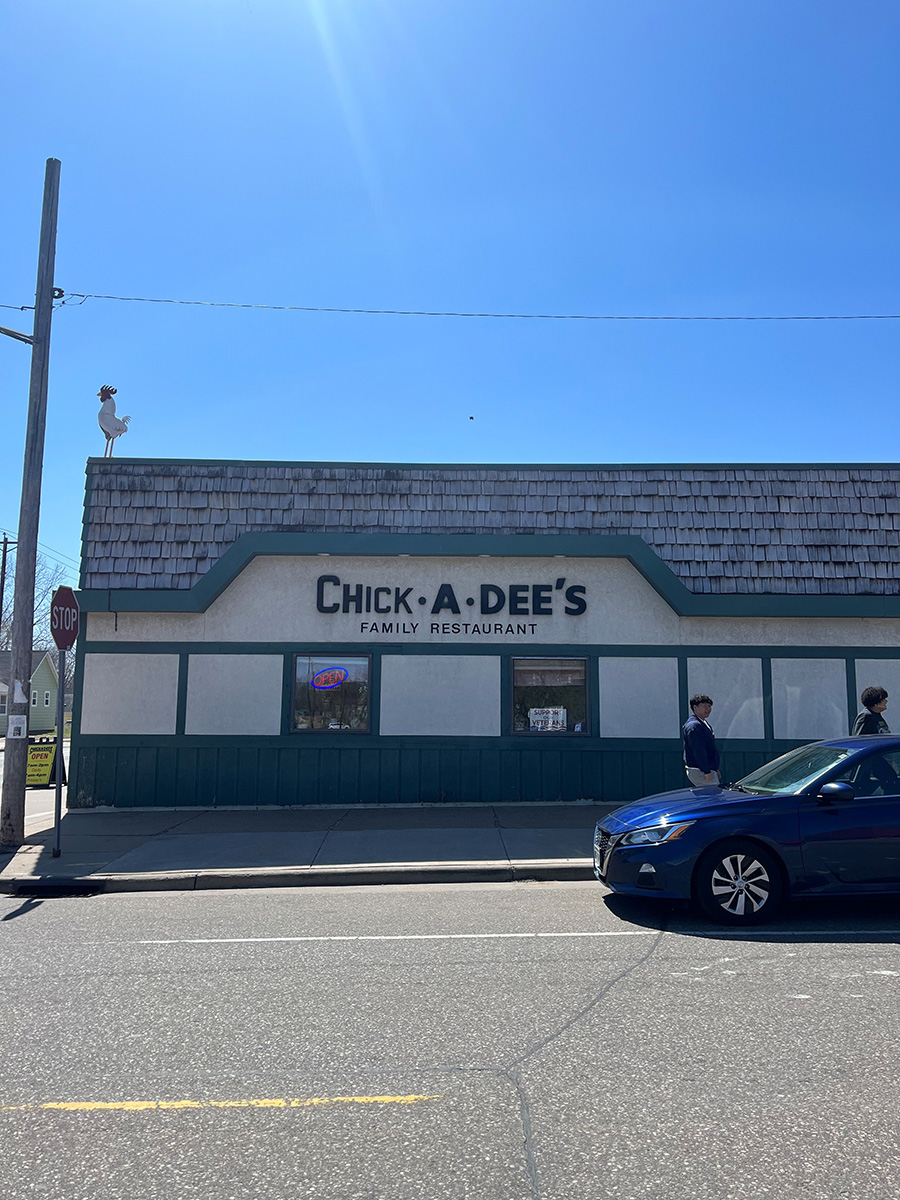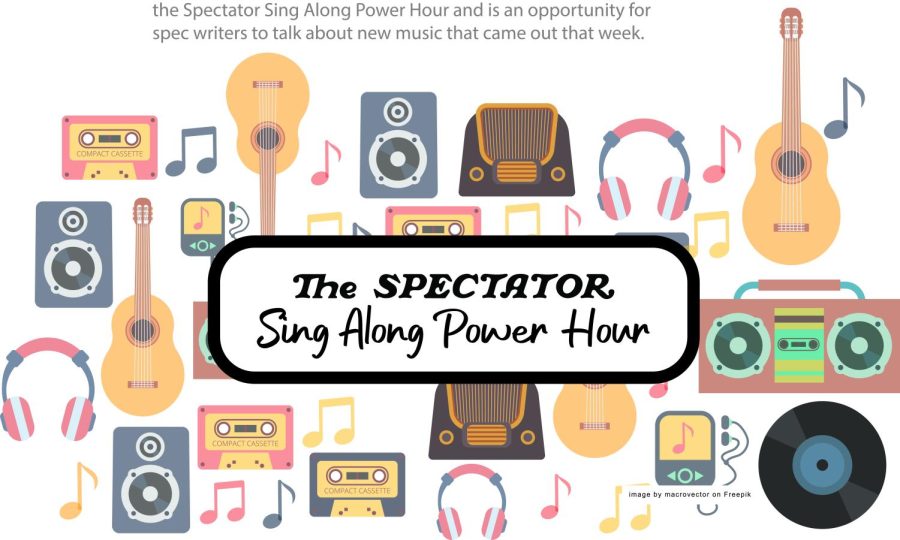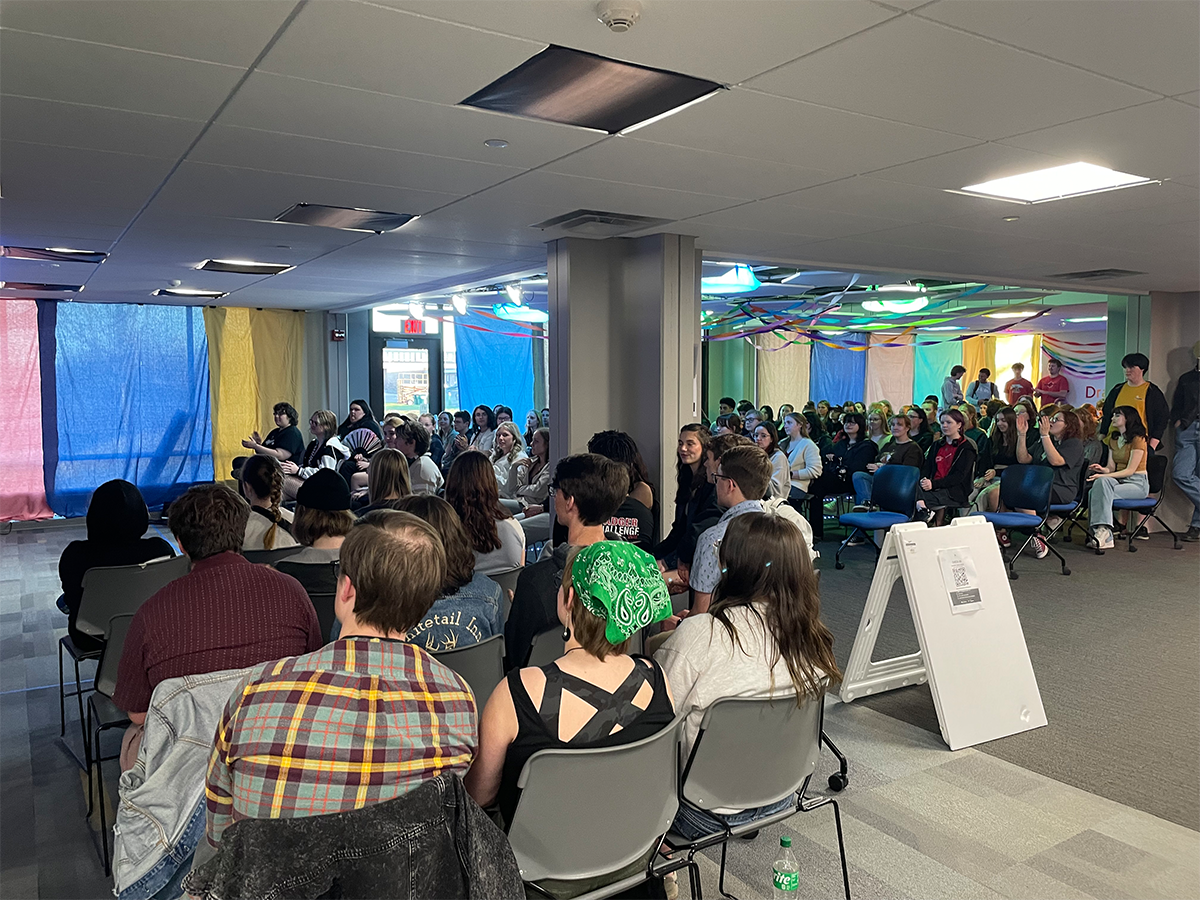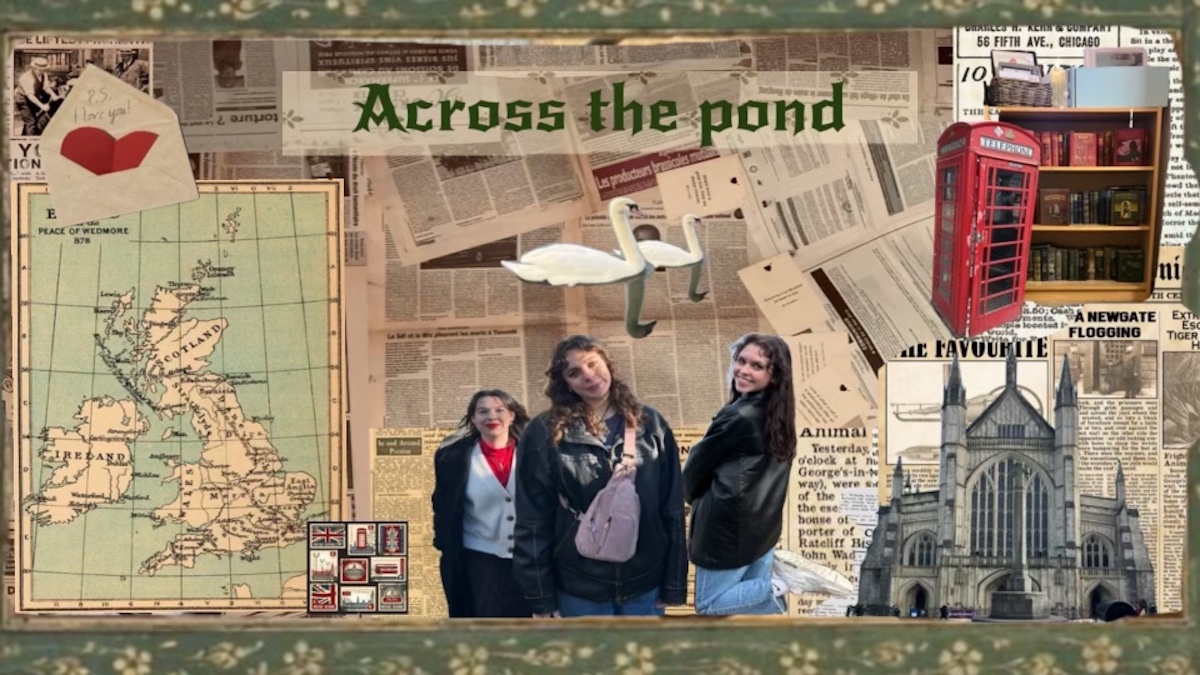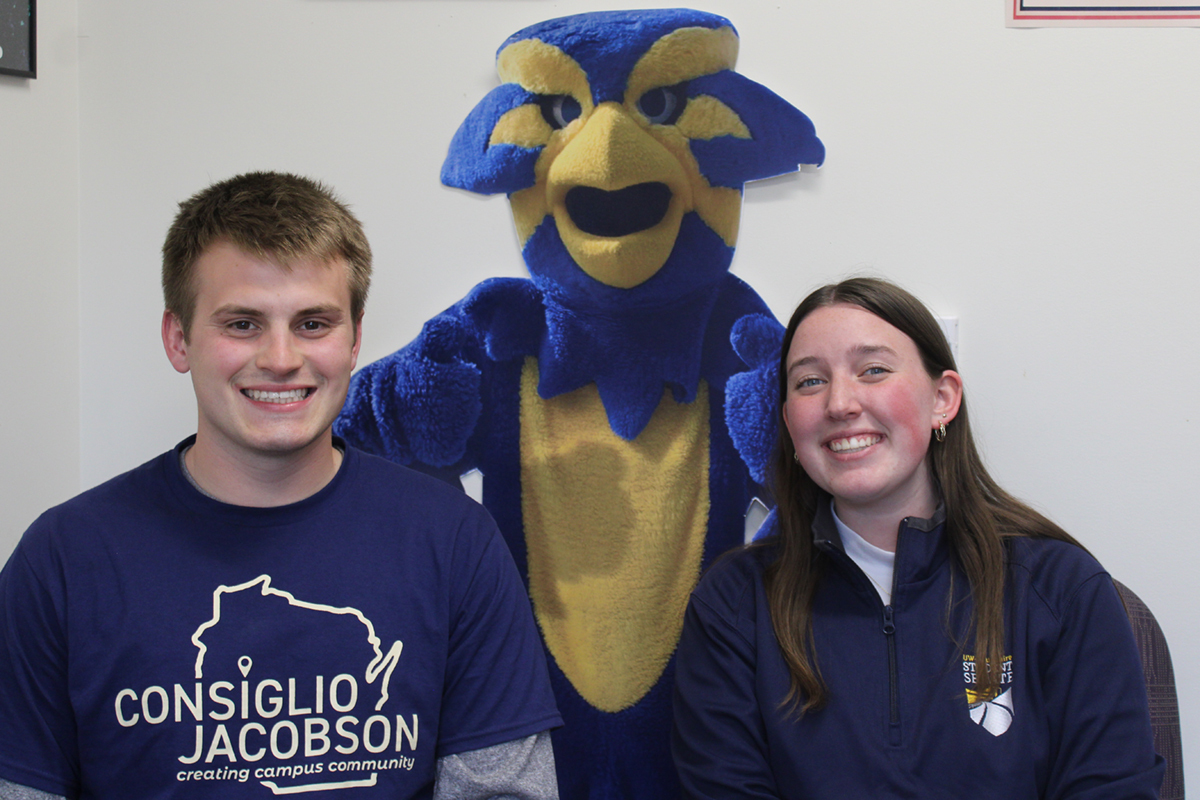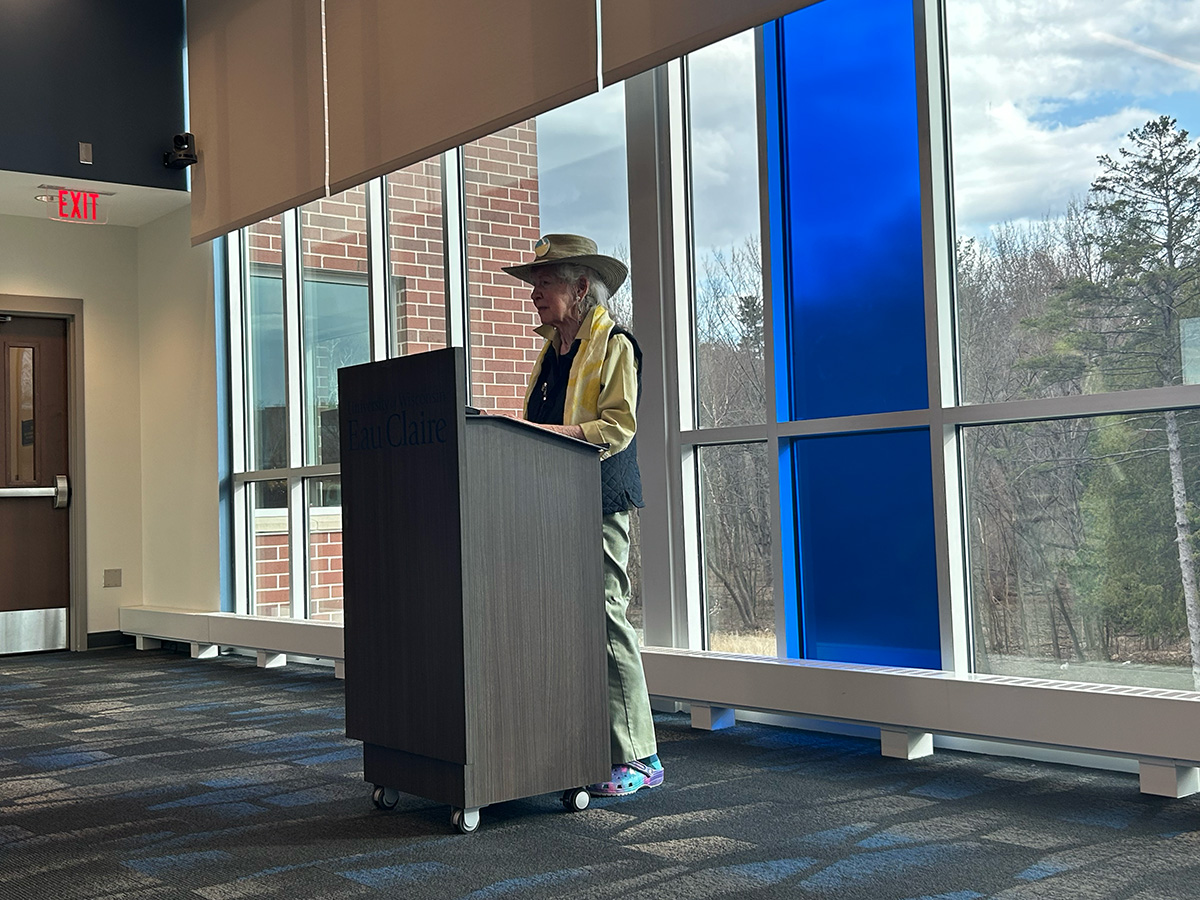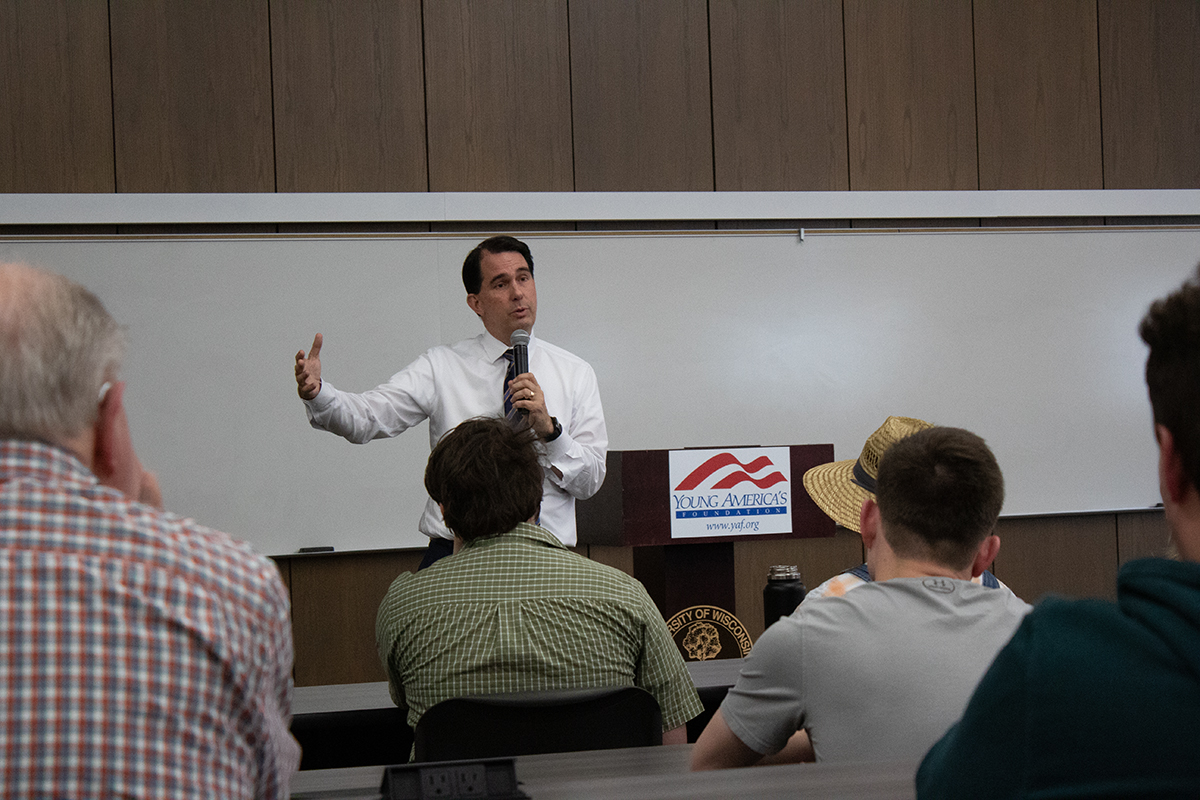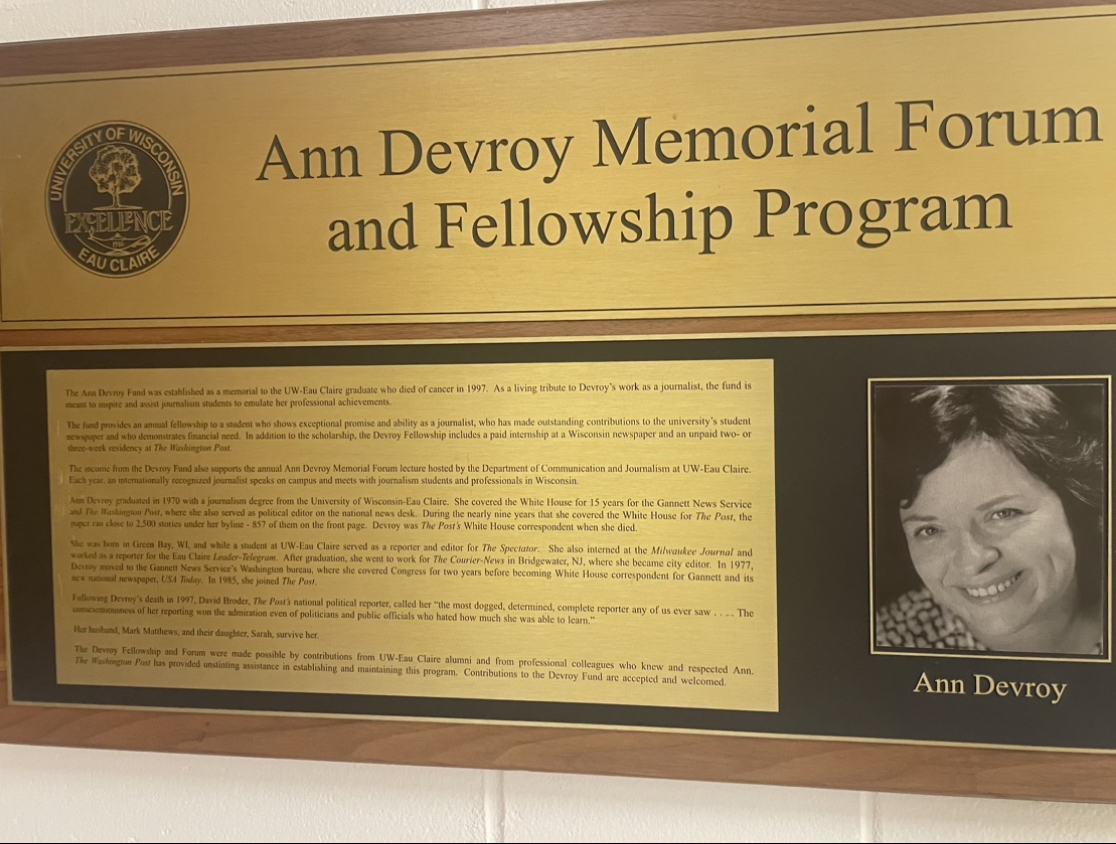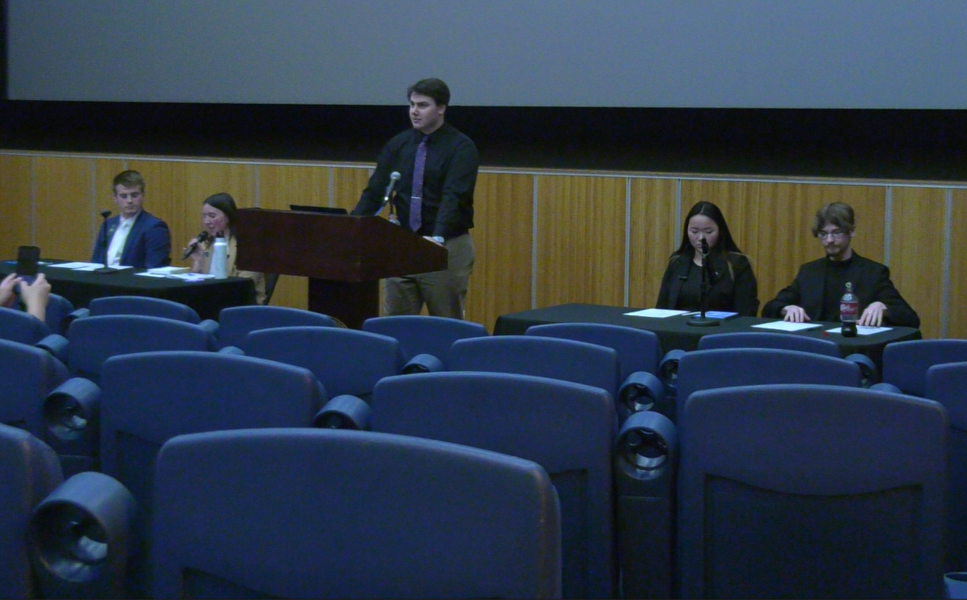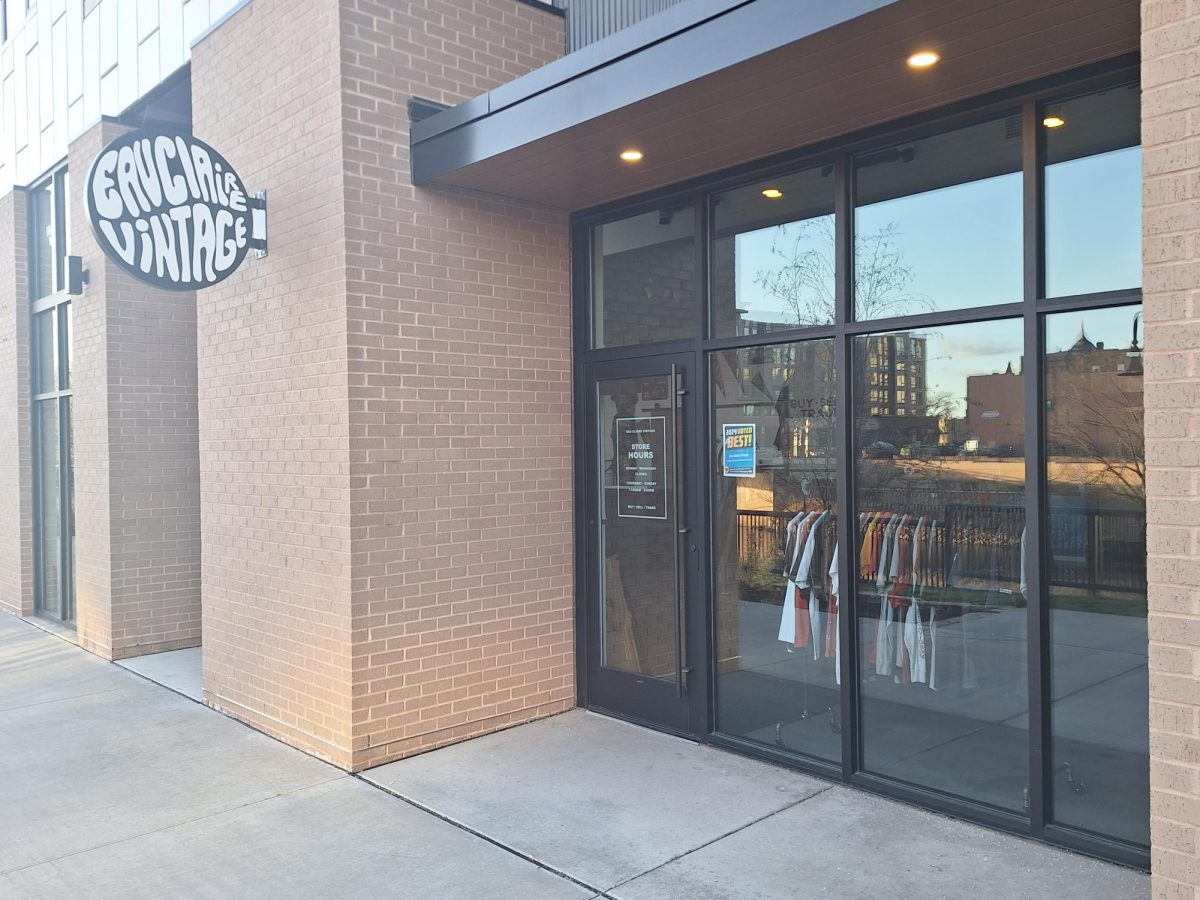The rhythmic pounding of feet and clapping of hands. Beating drums and yells of excitement. All of this could be heard blasting from Zorn Arena
Tuesday night.
The source of the sound was a professional dance company called Step Afrika!, who brought a dance performance known as stepping to the UW-Eau Claire campus.
Stepping is a relatively new dance art that was introduced by African-American fraternity and sorority students in the early 1900s when African-Americans first began attending colleges.
Step Afrika! dance company member Danielle DuBois Glover said the art of stepping was for African-American students to encourage inclusivity.
“Young men and women would gather on their main campuses or yards and form circles or lines singing chants, songs and even do some dance steps to show pride for their organizations,” she said. “They did it all in a sense of community.”
The Artists Series, which hosts several different groups throughout the year, brought Step Afrika! to campus as a way to embrace their commitment to diversity. The Artists Series Committee, which is formed of students, faculty and community members, decides what would be best to serve the campus throughout the year.
Co-coordinator of the Artists Series and student intern Ellie Wheeler said the idea of a unique dance tradition applied nicely to the program the Artists Series tries to organize annually.
“Stepping seemed like one of those events that had a culture aspect to it; it had an entertainment value to it,” Wheeler said. “It was just a very well-rounded program to bring to campus that kind of fit everything that the Artists Series stands for.”
According to the Step Afrika! website, stepping is a unique dance tradition in which the body is used as an instrument to create rhythms through a combination of foot-stomping, clapping and speaking/shouting words.
It is an evolution of the African-based tradition of using this method to pledge allegiance to a group. It continues to influence many groups throughout the country, whether it is spreading in middle and high schools or even being performed during church or community gatherings.
Junior Alycia Crowe was one of the audience volunteers during the event who went on to the stage to learn a few of the basic steps.
“It was a little intimidating, but it was really fun,” Crowe said. “They were really nice and really wanted you to get into it.”
She added they should “definitely” come back next year.
Wheeler, a senior who attended the show, said the feedback they received after the debut of the dance group was very positive.
“Responses were really good as people were leaving the doors,” she said. “During the performance you could tell the crowd was getting into it and they were enjoying themselves.”
As to the historical teaching throughout the show, Wheeler said it just added more to the experience.
“I think it’s good that they also did explain it,” she said. “Rather than just seeing something that was entertaining, it was also something you could take away. It should be that we do enjoy learning … outside the classroom.”

